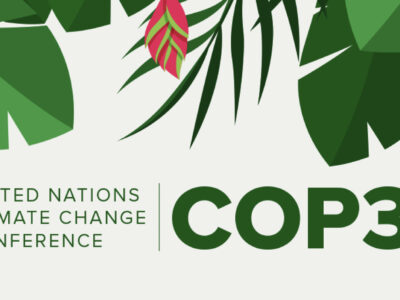
Sometime soon, a flock of “Climate Birds” could be ascending from a former NATO base in northeast France to take the measure of climate change around the world.
The Chambley-Planet Air Base, located in the Meurthe-et-Moselle département, about 10 miles west of the city of Metz, has more recently been the site of mass flights of hot air balloons that paint the sky with bright colors during a biennial festival. But the vision of Earth Institute scientist Yves Tourre and Laurent Husson, his partner and Climate City’s CEO, would turn part of the base into “Climate City”: a center for research on the local and regional impacts of climate change.

The 4 1/2 acre facility will include research and conference areas and accommodate some 300 research scientists and engineers. They will be developing new sensors and aerial vehicles, and processing climate data from around the world.
Much of climate science is based on observations and models built on a very broad scale. But the city planners and managers who are hoping to mitigate the worst effects of climate change, and to adapt as they can, need more precise data about what’s going on in their own regions. That’s where Climate Birds (now a trademarked name) come in.
Tourre and his colleagues have designed a simple formula: You take a 50-square-kilometer area, up to 1,500 meters high, and measure the heck out of everything—CO2 and other greenhouse gases, air pollution, temperature and moisture, rates of photosynthesis, and more—and see what’s changing. To do this, they will employ that flock of “birds”: drones, helicopters, tethered balloons and other assorted aircraft packed with instruments. To start, the project will set up such zones into three spots: at Chambley; Curitiba, Brazil; Niamey, Niger; and Riyadh, Saudi Arabia. More than 20 countries already have expressed interest in participating so far.
Data from these “Climate Bird” zones will be processed at the Climate City research center in Chambley, giving scientists consistent measurements from around the world they can use to gauge and predict future climate impacts. The Climate City teams hopes to use the research to create an “internet of the climate.”

The project gained a year of funding from the regional government of Lorraine and is seeking ongoing funds from both public and private sources. Besides the research activities, the center will facilitate and organize multi-disciplinary symposia and accommodate researchers from all over the world. Some may be coming from the Earth Institute, where Tourre is an adjunct senior research scientist at the Lamont-Doherty Earth Observatory. The former air base is a perfect spot to test out the Climate Birds idea, he said.
“We’ve been thinking very hard trying to see how we could improve the approach of using airborne equipment and measure the impact of climate change,” Husson said.
A lot of climate data is gathered on large scales to try to understand the global systems driving our climate. But that data may not adequately explain what’s happening locally, in cities and surrounding farms, vineyards or forests.

“Cities have very diverse and complex structures [and] getting the local scale is more useful” for assessing climate impacts on things like public health and agriculture, said Pierre Gentine, a hydrologist with the Columbia Water Center who will work with the project. He’ll be measuring things like photosynthesis, crop yields and soil evaporation, and the impact of pollution from cities on nearby agricultural areas.
“It’s the next frontier in terms of [measuring] climate impact,” he said. Adding in local information will also help improve the climate models scientists use to look into the future, he said.
“Collaboration with Climate City will add a lot more capacity,” said Pietro Ceccato, another Earth Institute scientist who works at the International Research Institute for Climate and Society. “When I started [doing research] I had to go in an airplane and use a camera and a big GPS, it took weeks of work just to take a few pictures.” Drones can accomplish similar work in minutes, he said.

Ceccato will travel to Brazil in the fall to work in Curitiba, monitoring air quality in collaboration with colleagues from the University of Parana. The city now has just a single air monitoring station; the Climate Birds will greatly expand where and how they can measure, he said. Ceccato plans also to study how climate and the local infrastructure affect the spread of diseases such as dengue fever. For instance, trees can help reduce a city’s “heat island” effect, but they also may block air flow and thereby concentrate air pollution.
In Niamey, the capital of Niger, Ceccato hopes to monitor water quality, flood risk and the availability of water during droughts. He also hopes to use Climate Birds information to assess mosquito populations that may spread diseases like malaria, and map the habitat for a snail that spreads another disease, schistosomiasis.
“The Climate City societal project is to improve the benefits of humankind in the near future. It’s a great challenge, and I’m proud of working with Yves and our colleagues from Columbia University on this adventure,” Husson said.




